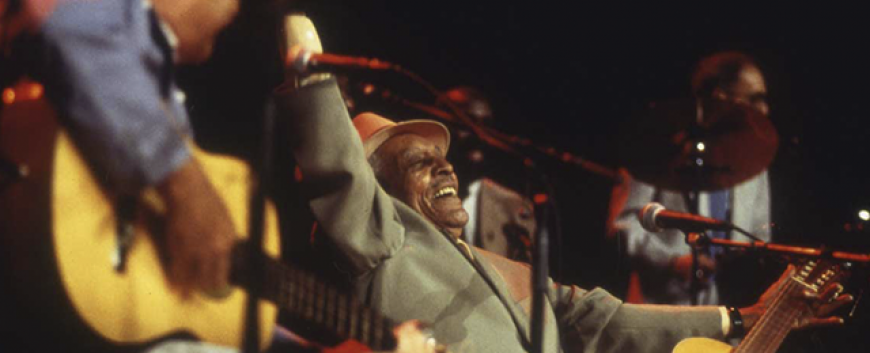My Cuba Diaries: The return of the Buena Vista Social Club
It was 1997 when songs like Chan Chan, Dos Gardenias and Candela put Buena Vista Social Club on the map of music fame.
Named after a Havana member’s club that closed in the 1940s, the group was born as a result of the collaboration of American guitarist Ry Cooder and Cuban performer Juan de Marcos González, recording an album with feted Cuban musicians, already established on the island nation, but largely unknown outside of Cuba. The studio album quickly gave rise to international success, to live performances in Amsterdam and New York, and soon following, to an Oscar-nominated documentary directed by Wim Wenders. The accolades continued pouring in: further soundtracks, world tours and solo albums. Recorded in just six days, Buena Vista Social Club – the group - had become Cuba’s music ambassador.
 Compay Segundo onstage (1998) © Geraint Lewis
Compay Segundo onstage (1998) © Geraint Lewis
With el son as main genre (some bolero, guajira and danzón), Buena Vista Social Club lives on decades to follow thanks to its timeless classics, even after six of the original members – Ibrahim Ferrer, Compay Segundo, Rubén González, Orlando “Cachaíto” Lopez, Pío Leyva, Manuel “Puntillita” Licea – have passed away. The surviving members – the stately singer Omara Portuondo and guitarist and vocalist Eliades Ochoa – along with new ones, have continued touring as the Orquesta Buena Vista Social Club, as part of a 13 member band. The lineup changes, but the repertoire has remained much of the same. Until now. Lost and Found, an album of previously unreleased tracks, has launched this spring, thus dusting off a dormant glory of days past.
Opinions are divided. Many say the music sang by the legendary ensemble is not representative of Cuban music as a whole. And in the broad spectrum of things, they are right. It’s at odds with the more modern music Cubans are actually listening to in present day: timba and salsa cubana, and unique mixtures of son, jazz and reggaetton, with international sounding, rhythmic dance music. However, despite the questionable copycat bands, singing the same songs at every corner and in every restaurant, it’s the Buena Vista Social Club – and the staple sounds of the Cuban son, reminiscent of the golden age of the 40s – that drew tourists’ attention to the country’s musical assets, and implicitly its people. It’s what contributed in the late 1990s to Cuba’s growing tourist industry, undeniably changing the world’s perception of the island country following the collapse of the Soviet Union. That passion and faith catered to el son by its praised members came across again and again, and endured more profound than any other genre of its kind.
With the new release, the show must go on! In a final attempt to thrill audiences around the world, the group is currently on a farewell tour. Rest assured, the same fire and passion of the song remains. For Omara Portuondo especially, now 84, she continues performing as imposing and sensual as ever, despite battling ardent memories and colleagues’ ghosts. While the stage is the same, times have changed. Along with it, Cuba has changed.
 Buena Vista Social Club Band outside Carnegie Hall © Ebet Roberts
Buena Vista Social Club Band outside Carnegie Hall © Ebet Roberts
I don’t know about you, but I will never tire of Chan Chan. Written by acclaimed musician and group member Compay Segundo, in 1987, the four-chord son became “the Buena Vista’s calling card,” as Cooder described it. I would much rather hit play on Ibrahim Ferrer and his Buena Vista Social Club performances, than I would on a song of modern reggaeton. That’s what transports me to Cuba, and in my opinion, that’s reason enough for me to say: continue on with el son!
For future concerts held by the Grammy-winning group for best-selling album, check Buena Vista Social Club’s complete tour listings for 2015.
Monica Suma is a freelance travel writer. Follow her on Twitter @monicasuma.














